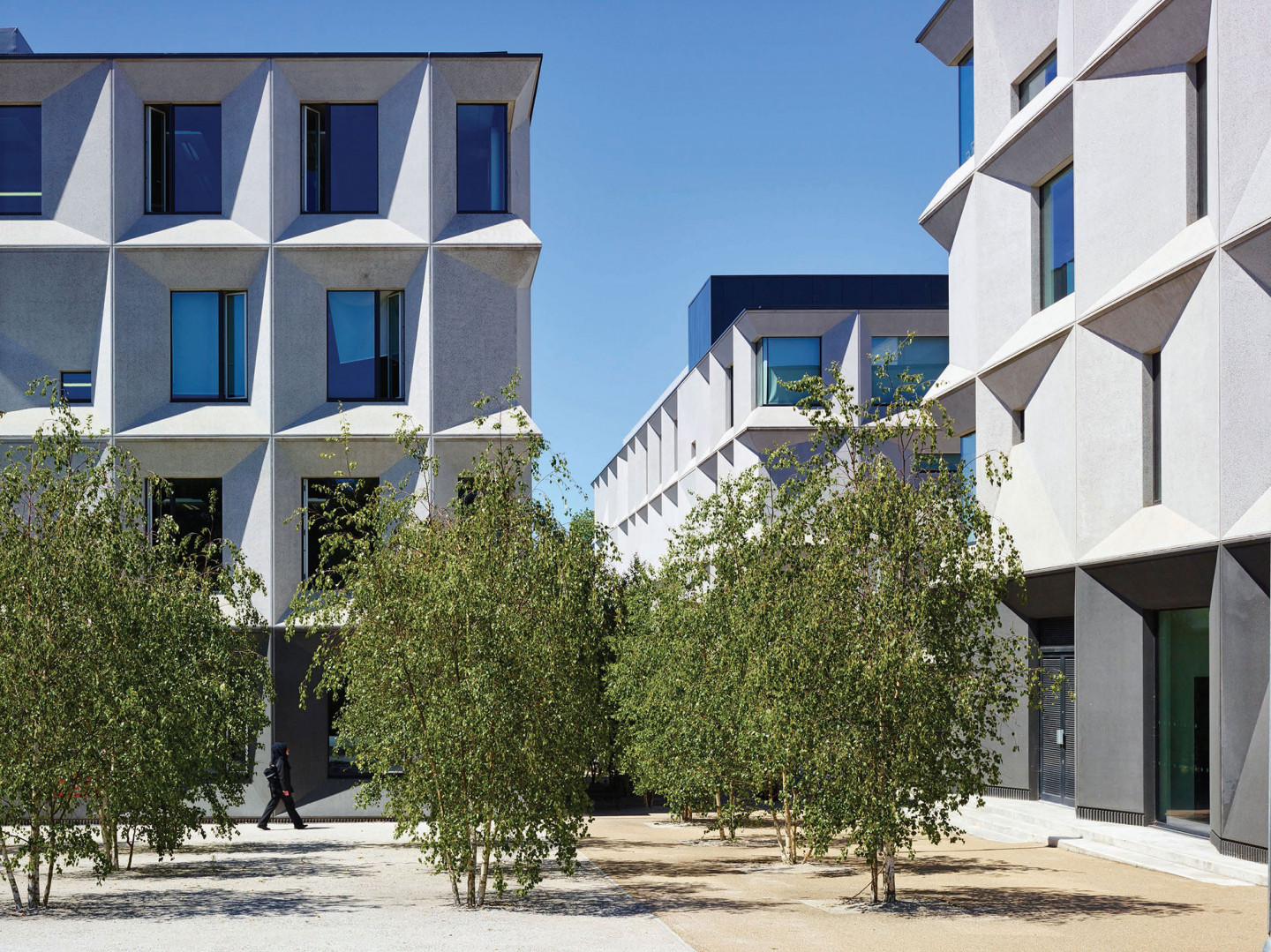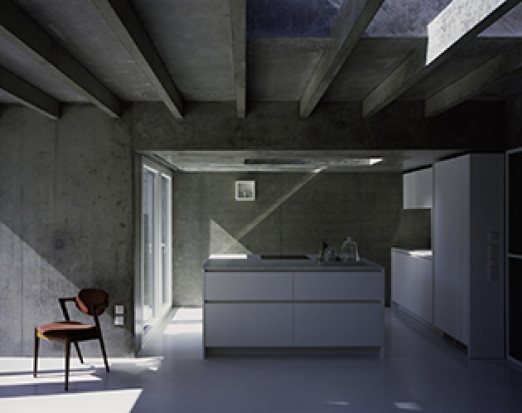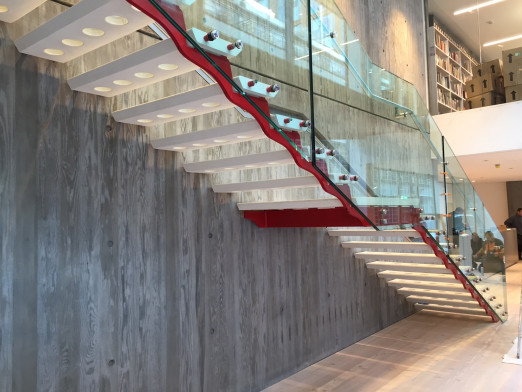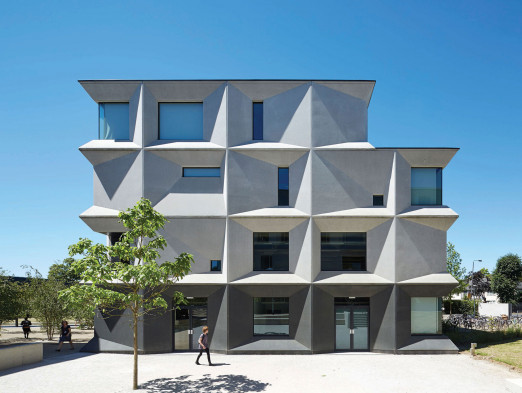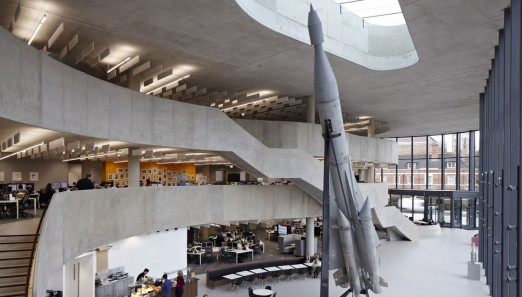Elaine Toogood, Senior architect at the Concrete Centre reflects on current uses of concrete in buildings in the UK, and its direction of travel.
The continued success of the Concrete Elegance lecture series held at The Building Centre seems to indicate that exposed concrete continues to be a finish of interest, and can be used to create inspirational and acclaimed architecture. This is exemplified by Burntwood School, the current Stirling Prize award winner , presented by Paul Monaghan to a packed house at our Autumn event. Burntwood continues the trend for exposed visual concrete soffits in schools and other public buildings to optimise the use of thermal mass as part of a low energy cooling strategy. It also extends the expression into walls, staircases and classrooms, celebrating the sleek smooth and robustness of the concrete surfaces. Furthermore, striking precast concrete facades in sparkling black and white geometric profiles remind us that concrete can be so much more than grey and flat. The aesthetic opportunities for creativity, combined with durability and energy efficiency benefits are being utilised by numerous projects in development, which I look forward to celebrating throughout the year in forthcoming events.
Less evident perhaps, hidden away, is the continued use of concrete blockwork, as the structural material of choice for residential construction – hovering around the 90% mark for UK homes last year according to NHBC figures. The concrete block industry continues to facilitate the construction of high thermal performance homes by the recent publication online of freely available pre-calculated PSI values, assisting in the calculation and reduction of thermal bridges.
The use of concretes’ thermal mass is expanding. I am aware of more projects using active slab solutions for extra cooling and control in addition to the night time purge ventilation. This includes embedding water pipes in the concrete floor structure which can be cooled using geothermal piles or other low carbon cooling solutions. (Example East Ham Civic centre) Such solutions have the potential to play a significant role in reducing overheating in our buildings in the future.
"Concrete continues to play a significant role in the creation and repair of flood defences..."
Resilience to climate change adaption seems to be rising on the sustainability agenda for the built environment and is newly embedded in BREEAM new Construction and the Homes Quality Mark from the BRE. The wide spread flooding experienced over the winter created a new urgency for flood prevention and resilience. Concrete continues to play a significant role in the creation and repair of flood defences largely due to its durability in extreme weather conditions. It was fundamental to the successful and speedy repair of the Dawlish rail line for example. Concrete was fundamental to the successful and speedy repair of the Dawlish rail line.
Of the coming months I expect there to be a wider understanding of ways of adapting the detail of new build construction using concrete and concrete masonry for improved flood resilience.
.jpg?1452692807) The 7th annual concrete industry performance report was published in 2015 and shows the average ECO2 of concrete in the UK as 22% lower than it was in 1990. This is on target to reach the UK target of 30% by 2020 and reflects the continued improvements in manufacturing processes of cement through the use of waste as an alternative fuel. The use of low carbon cements, such as those Fly Ash or GGBS (Ground Granulated Blast Furnace Slag) is more understood, with the construction community recognising their ability to significantly lower the embodied carbon footprint of a building by specifying low carbon concrete mixes. The 8th report will be launched at Ecobuild 2016 with the latest data.
The 7th annual concrete industry performance report was published in 2015 and shows the average ECO2 of concrete in the UK as 22% lower than it was in 1990. This is on target to reach the UK target of 30% by 2020 and reflects the continued improvements in manufacturing processes of cement through the use of waste as an alternative fuel. The use of low carbon cements, such as those Fly Ash or GGBS (Ground Granulated Blast Furnace Slag) is more understood, with the construction community recognising their ability to significantly lower the embodied carbon footprint of a building by specifying low carbon concrete mixes. The 8th report will be launched at Ecobuild 2016 with the latest data.
Also being launched will be a range of Environmental Performance Declarations (EPD’s) for concrete products. This data can be used by BIM software to facilitate more accurate Life Cycle Assessments. As the use of EPD’s spreads I can I would expect the importance of Whole Life performance to grow, with a focus on environmental impacts throughout the life of a building including end of life.
I am excited by the innovative products and solutions that are becoming more readily available to the UK market - permeable concrete for flood mitigation, photographic concrete for gorgeous permanent images cast into concrete panels and insulating concrete formwork systems to name just a few. Who knows what I will be reporting on this time next year - 3D printed concrete ? I can’t wait.
